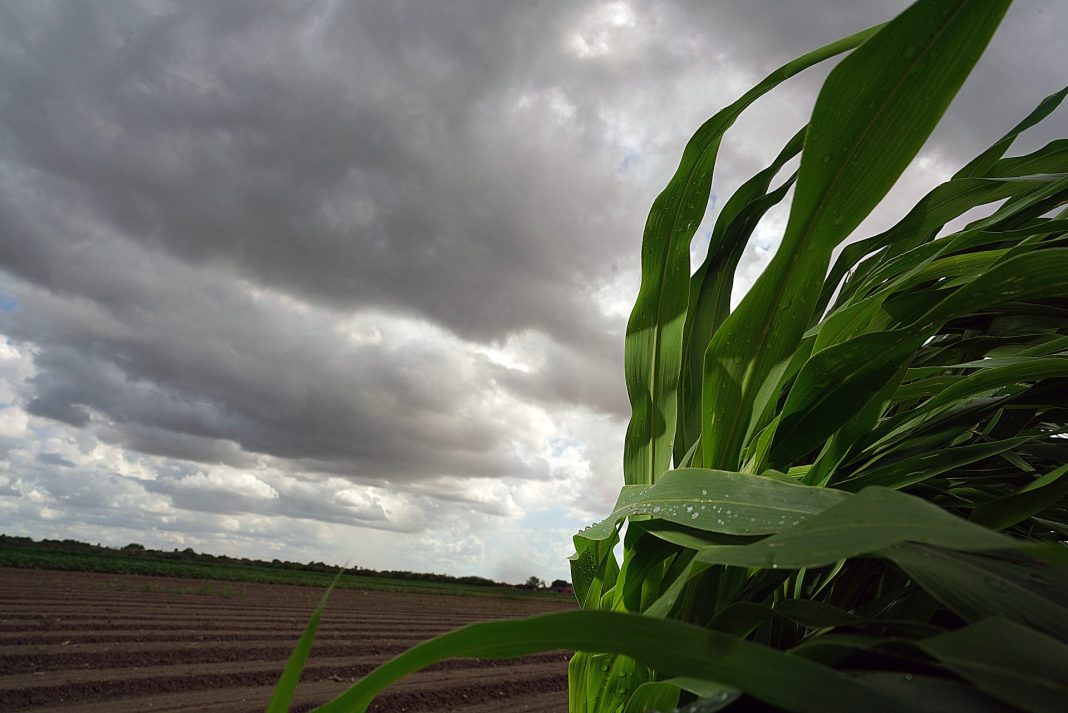|
Only have a minute? Listen instead
Getting your Trinity Audio player ready...
|
All it took was a new month for rain to begin making a comeback in select portions of the Rio Grande Valley, albeit in isolated select portions and not necessarily in massive quantities.
Nevertheless, thanks October.
Where rain did fall, such as in parts of Harlingen and Brownsville, it fell up to 1 inch, even 1.5 inches if you were lucky, though it was sparse elsewhere. Brownsville South Padre Island International Airport registered only a trace amount, for instance.
Barry Goldsmith, warning coordination meteorologist for the National Weather Service Brownsville-RGV station, credited sea breeze activity aided by upper-level disturbances for the showers that wandered inland, though he painted a much wetter picture for the coming week, possibly through the weekend or longer.
It’s due to a combination of factors, he explained, among them an actual cold front associated with a robust “typical autumn system” making its way across the Great Lakes and Upper Midwest to the Lower Ohio Valley and Mississippi Valley to our neck of the woods.
“It’s going to arrive here late week into the weekend,” Goldsmith said. “I’m not saying it’s wintertime robust, but it’s certainly autumnal. … Due to the time of year and the strength of that system aloft, it will drive it all the way through the Valley.”
Rain is pretty much a given, though how much is unknown, he said.
“It’s a classic set up,” Goldsmith said. “You’ve got a front, which alone is an air mass change and a source of lifting in the atmosphere at low levels. There’s an upper level disturbance moving along the flow that helps provide additional lift.”
And then there’s the “really interesting” possibility of tropical moisture from a thing currently brewing in the Pacific Ocean, he said.
“There’s a tropical cyclone that’s probably going to become a tropical storm and maybe a hurricane by mid- to late week in the Eastern Pacific that will be moving west along the Mexican coast,” Goldsmith said.
Thanks in part to an upper level low-pressure system lurking off the coast of California, that tropical action in the Pacific could provide enough moisture moving southwest to northeastern along the aforementioned approaching cold front to create substantial rain, he said. The deep tropical moisture plume would pass through Sinaloa, then onto Coahuila and Chihuahua, Mexico, before penetrating South Texas, Goldsmith said.
“The question becomes how does that all link together in time for Thursday night, Friday and maybe beyond?” he said. “That’s an answer we don’t have, because the models don’t quite agree.”

What’s made it all possible is the fact that the “La Canicula” high-pressure ridge that’s been parked over southwestern Texas and northern Mexico since early June has finally shifted east, and was centered over the western Gulf of Mexico as of Monday morning, Goldsmith said.
If the Pacific tropical cyclone “re-curves” sufficiently and in the right direction, the ensuing atmospheric river could cause enough rain to fall over the headwaters of the Rio Grande basin to reverse the continuing drop in water levels at Amistad and Falcon reservoirs, which are now at or below record levels set in 1956, he said.
Normally, they would have begun filling up again, but as of Sept. 25, reservoir conservation capacity for the United States and Mexico was at 22.7% and falling, Goldsmith noted. Stage 2 and in some cases Stage 3 drought restrictions usually kick in at 25% for Valley communities.
“There’s a lot of unknowns right now that hopefully come together over the next six to 10 day,” Goldsmith said. “Between this Thursday and next Thursday we’re going to know a lot more, whether it’s going to be enough to fill up the reservoirs. Those questions are still unanswered, but the potential is there.”
Regardless, rain is coming, which means it’s time to check those windshield wipers, tires and brakes, he said.
Along with the rain, expect a lovely bout of autumnal weather — autumnal for South Texas, at any rate. In fact, the forecast is for cooler-than-average temperatures for this time of year across the Valley, Goldsmith said.
“As early as Friday, depending on how much rain we get Friday and how long it lasts, Friday could be in the upper 70s to lower 80s if it’s wet all day, with a north or northeast wind, so it’ll feel different,” he said. “Over the weekend, if we have clouds and light rain left over, and still north or northeasterly wind, with the atmosphere cooler than it’s been, we’ll be in the upper 70s to lower 80s by day, and 65 to 75 by morning.”
And that’s below average, Goldsmith noted.
“We could see the switch from above to much above (average heat), which has been persistent, down to below average by several degrees, up to 10 degrees below averages across the Lower Valley,” he said. “It could be 10-15 degrees below average in Starr and Zapata counties.”
Depending on how long the rain and clouds persists, Valley residents may be able to savor several days of below-average temperatures, Goldsmith said.
“It doesn’t mean it’s going to stay that way forever,” he said. “It just means that we get a break.”





